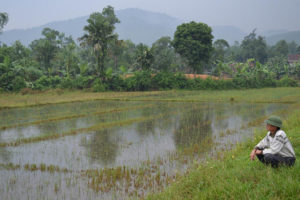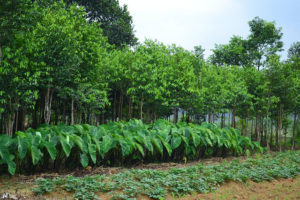
The World Agroforestry Centre (ICRAF) in collaboration with Bioversity International and the Tropical Agricultural Research and Higher Education Center (CATIE) recently published an atlas titled Suitability of key Central American agroforestry species under future climates.
The atlas presents current and future suitability maps for 54 species that are commonly used as shade in agroforestry systems in Central America. The 54 species that were selected include 24 species of fruit trees, 24 timber trees and six species used to improve soil conditions.
The work was made possible through the financial support of the CGIAR Research Program on Forests, Trees and Agroforestry (FTA) and the CGIAR Research Program on Climate Change Agriculture and Food Security (CCAFS), which are supported by CGIAR Fund Donors, and of HIVOS.
Read more: Suitability of key Central American agroforestry species under future climates: an atlas
“The main objective of the atlas is to address a current knowledge gap in detailed information about suitable areas for key agroforestry species in Central America,” said Kauê de Sousa of Bioversity International, who is the main author of the study.
“The agroforestry practice of integrating trees within cocoa or coffee, silvopastoral or smallholder timber systems is key to the development of strategies for climate-smart agriculture in the region. It is important to know where a species remains suitable under future climatic conditions to be able to give practical advice to farmers and tree growers.”
The atlas addresses this knowledge gap by providing detailed suitability maps for each species. Detailed mapping was possible by substantially expanding previously available data sets of known presence locations (locations where a species was documented to be suitable in Latin America and the Caribbean) and by applying powerful species distribution modelling methods.

The future climates correspond to Representative Concentration Pathways (RCP) 4.5 and 8.5 for the 2050s. Four RCPs (2.6, 4.5, 6.0 and 8.5) were introduced in the latest assessment report of the IPCC. These scenarios describe possible future climates that depend on potential changes in greenhouse gas emissions. RCP 4.5 represents an intermediate emissions scenario, whereas RCP 8.5 is a high emissions scenario.
Ensemble suitability methods were applied using the BiodiversityR package, an open-source software package developed by Roeland Kindt, a senior ecologist at ICRAF and one of the coauthors of the atlas. The software modelled species distributions with bioclimatic variables obtained from WorldClim for the baseline climate (1960–1990). Distribution maps for the middle of the 21st century were obtained via future climate data generated by 17 global climate change models.
Ensemble future distribution maps for each RCP are based on consensus among 17 future distribution maps generated for each species. Maps projecting future distribution were compared with the current distribution maps to evaluate the potential changes in the distribution of each species.
Read also: Agroforestry to meet the Paris Agreement
Reflecting on the results, Maarten van Zonneveld of Bioversity International, a scientist in diversity analysis for conservation and sustainable use of plant genetic resources, said the results indicated that the modelled distribution for 30 species reduces under both climate change scenarios.
The most threatened species include N-fixing ice-cream bean trees (Inga spp.), the delicious cherimoya (Annona cherimola), the economically important avocado (Persea americana), and the solid timber species Handroanthus ochraceus. Ten species are expected to increase their distribution under both climate change scenarios including the underutilized fruit species Averrhoa bilimbi, coconut (Cocos nucifera), cocoplum (Chrysobalanus icaco), Spanish lime (Melicoccus bijugatus) and the majestic rain-tree (Albizia saman).
Jenny Ordonez of ICRAF and a specialist in agroforestry systems and functional ecology emphasized that “the atlas provides a first approximation of this kind in the region, to assess which species might be vulnerable or tolerant to expected climate change. Agroforestry practices are one of the main strategies for developing climate smart agriculture and as such are widely advocated by research and development organizations alike in this region. The results of the atlas are therefore an important tool to support the design of agroforestry practices taking into account potential impacts of climate change. The maps provided should be used in combination with other information sources from technicians and farmers to fine-tune the selection of species for designing climate proof agroforestry systems.”
Jonathan Cornelius, regional coordinator from ICRAF, concluded that “many of the trees that farmers are planting and managing now will need to remain productive up to and beyond 2050. This important publication provides a firm foundation for building the climate-smart agroforestry that farmers need, based on the best currently available information about future climates and species’ requirements.”
Originally published by ICRAF.
This work forms part of the CGIAR Research Program on Forests, Trees and Agroforestry, which is supported by CGIAR Fund Donors.











